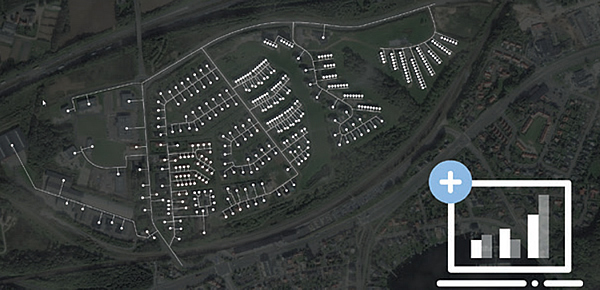The decarbonisation of heating systems is no longer a question of ‘if’ but rather ‘how soon’. With increasing focus from all industry levels on the potential in district heating as the vehicle to make it happen, it is crucial to use current positive developments as stepping stones to making the digitalisation of district heating a reality.
One of the key measures supporting decarbonisation is the ongoing negotiations on the Clean Energy Package in which specifically the Renewable Energy Directive (RED) aims to increase the share of renewable and surplus energy in district heating. Smart grids are a fundamental enabler of this integration.
In this respect, another very important – and closely linked – directive is the Energy Efficiency Directive (EED), which focuses on providing end users with the knowledge and transparency they need to enable more energy efficient behaviour. One direct output of this is the updated Article 9 stating that district heating utilities must supply their customers with information about their actual energy consumption 12 times a year.
A precondition for utilities to be able to meet this obligation is the installation of remotely read heat meters to supply the necessary data. However, greater insight and feedback for end users is only the beginning. Once intelligent meters have been installed in the network, they will open up to a whole new world of digitalisation possibilities for the entire energy system.
FROM POTENTIAL TO REAL VALUE
Using the installation of intelligent heat meters to pave the way for going even further and getting meter data perhaps every hour rather than once a month holds enormous potential for the utilities as well.
Together with the Danish District Heating Association, Kamstrup set out to uncover the actual value of that potential. As a result, analysis company Ennova recently conducted a study based on in-depth interviews with 10 Danish utilities about their experiences with remote reading of meters.
The study showed potential savings within the areas of infrastructure investments, administration, customer service, operational efficiency as well as energy consumption. In total, they amounted to an efficiency potential of 30 times the cost of investing in making the reading of meters more intelligent and frequent, which has been estimated at EUR 8 per year per connected customer. Thus, the business case was clearly established.
TALK IS CHEAP. INNOVATION IS NOT.
As a long-time advocate for the undeniable value of data, Kamstrup has a strong and strategic focus on innovation. As a result, 25% of our workforce work in product development including 20 employees dedicated to working exclusively on data analytics.
This is because in order for utilities to unlock that value they need the right tools to turn their meter data into knowledge on which to base both their everyday decisions as well as long-term investments. The possibilities in digitalised district heating are endless, but now is the time to take the next step of delivering real results.
